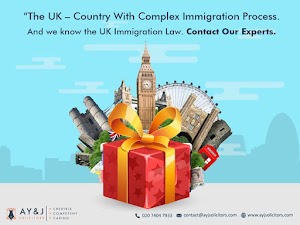Disclaimer: The information in this blog is accurate as of its publication date. Any updates after that date are not reflected here.
Table of Contents
What are the new Immigration Changes to Tier 2 category that have taken effect this month, October 2019?
- Shortage Occupation List (SOL) Expansion
The expansion of the Shortage Occupation List following the Migration Advisory Committee’s (MAC) review earlier this year is the most notable change affecting the Tier 2 category. The list has been significantly expanded both through the addition of new Standard Occupational Classification (SOC) codes on the list and the broadening of those had already featured.
The practical consequence of this Immigration Changes to Tier 2 is that employers will no longer need to complete a resident labour market test for any role that is included on the SOL. The removal of the 28-day advertising period will be welcome to those facing tight deadlines. Additionally, migrants sponsored in jobs featured on the SOL will be exempt from meeting the minimum salary requirement (currently £35, 800) when applying for indefinite leave to remain although they will still need to meet the minimum salary requirement contained in the relevant SOC code.
- Broadening of existing codes
Certain SOC codes that were previously on the shortage occupation list specifically excluded all jobs within the code bar a select few – this restriction has now been removed for many of these codes.
- Technology roles
Of interest to technology, firms will be the expansion of the codes that cover software developers, IT business analysts and systems architects. All jobs within these codes are now included on the shortage occupation list, and the DigiTech qualifying criteria has been removed.
- Engineering Sector
The engineering sector has also benefited from the new SOL, with all roles within the civil, mechanical, electrical, design and development, quality control/planning as well as production engineering SOC codes now being exempt from the resident labour market requirement.
- Medical Practitioners
Previously medical practitioner roles on the SOL were limited to consultants in certain specialities such as emergency medicine as well as certain trainee positions. As with the engineering codes, all roles falling with this code are now included on the shortage occupation list.
- Chefs
The big news for restaurants who struggle to recruit chefs from the resident labour market but who need to offer takeaway to survive is that they will now be able to sponsor chefs under Tier 2 (subject to the other restrictions contained in the SOL). This will be welcome news to restaurants, particularly to those in the curry industry who have been vocal about the harm the take-away restriction has done to their businesses.
- New SOC codes added
Following the Migration Advisory Committee’s review, some additional occupations have been added to the updated SOL. For example, biological scientists, biochemists, occupational therapists, psychologists and veterinarians all now feature on the SOL.
- PhD occupations exempt from the cap
In a bid to acknowledge the importance to the UK of non-EEA researchers and other highly skilled migrants, PhD level occupations will no longer be included in the 20, 700 annual cap applicable to those applying in the Tier 2 category (mainly) from abroad.
- English Language: Appendix O deletion and Exemptions to the English language testing requirement
Approved English language tests will no longer appear in Appendix O and can now be found on a new document on the gov.uk website. The new document also confirms that no physical document needs to be submitted as evidence of the relevant test. The document clarifies the format of the unique reference number that should be provided by applicants which differs depending on the provider (IELTS or Trinity College London).
Doctors, dentists and nurses and midwives will be exempted from the Tier 2 English language requirement where they have already taken a language test which is accepted by the relevant professional regulatory body as a requirement for registration. This exemption will also apply for ILR applications.
- Changes affecting Indefinite Leave to Remain (ILR)
Those migrants who are absent from work due to assisting in a humanitarian or environmental crisis, statutory parental leave or legal strike action will be exempted from the salary threshold for the purposes of applying for ILR where they can provide the relevant evidence.
Additionally, the Home Office will discount any absence for those migrants who are sponsored in a PhD level job where the absence directly relates to the migrant’s UK research for the purposes of deciding whether a migrant has had continuous residence in the UK.
- Graduates switching into Tier 2 from Tier 4
The rules relating to Tier 4 have been updated to clarify the position for students who are switching into Tier 2 within the 3-month period before the end date of their course. Where such a student has made a Tier 2 application, they will be able to work for the employer in the sponsored role until a decision has been made on their Tier 2 application.
If you would like more information about the new changes and how will this affect you or your family get in touch with us NOW. Please contact us at contact@ayjsolicitors.com or call +44 20 7404 7933.
Disclaimer: No material/information provided on this website should be construed as legal advice. Readers should seek an appropriate professional advice for their immigration matters.









